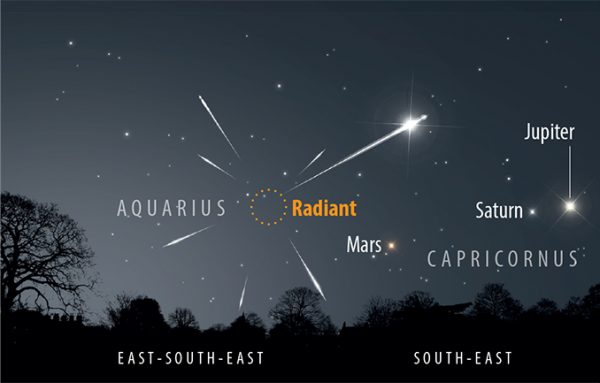Eta Aquarid meteor shower reaches peak – Astronomy Now Online
Although the short-period comet 1P/Halley, the most famous comet of all, will not return to the inner Solar System until 2061, if you look out for some shooting stars in the pre-dawn sky courtesy of the Eta Aquarid meteor shower, you might see some of the debris Halley has left behind over the eons it has orbited the Sun.

The annual Eta Aquarid meteor shower produces shooting stars when the Earth passes through Halley’s debris stream and tiny particles burn up in the upper atmosphere. The shower offers one of the strongest showings of the year, but its meteors are best seen from locations in the Southern Hemisphere. The area of sky from which the meteors appear to appear from (called the radiant) is located in north-western Aquarius, close to the ‘Y’-shaped ‘Water Jar’ asterism formed from the stars eta, zeta, gamma and pi Aquarii.
From UK shores, the radiant has climbed to an altitude of about 15 degrees above the east-south-eastern horizon by about 4am BST (around 90 minutes or so before sunrise from London), just as the onset of nautical twilight signals that daybreak isn’t far off. By this time, the near-full Moon lies around 10 degrees over the west-south-western horizon.
At a decent observing site at more southern climes, observers can reasonably expect to see between say 15 to 20 meteors an hour. The Eta Aquarids are fast meteors and often leave persistent trains or trails. Unfortunately, the radiant’s low altitude across the UK will temper that rate during the short observing window. However, there’s a pretty decent weather forecast for the night across the UK, so if your garden or window has a decent easterly outlook then why not set your alarm and have a crack at seeing some of the ancient debris shed by Halley over countless generations.





